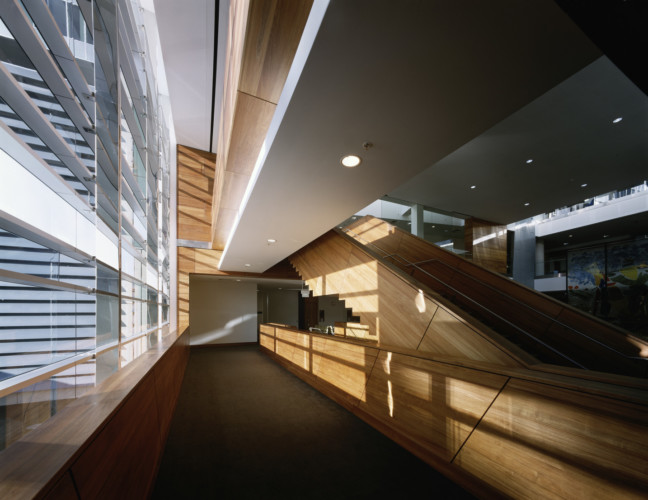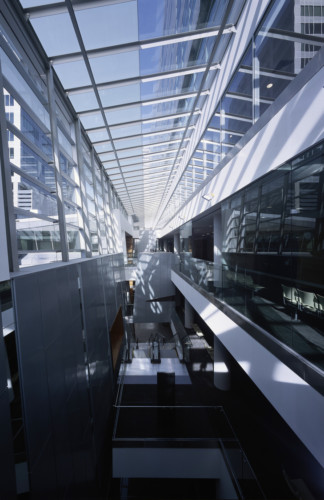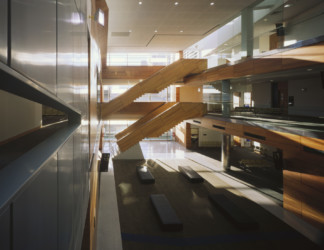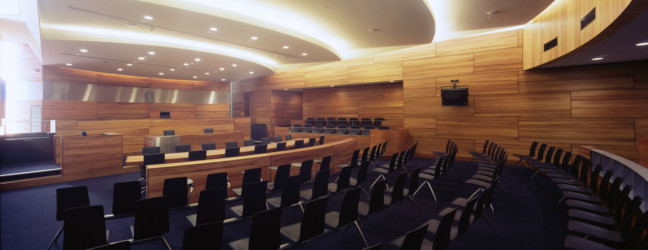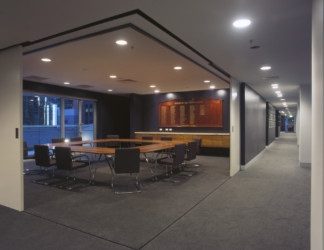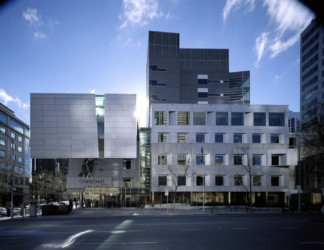
County Court of Victoria
Location
Melbourne, Australia
Jackson Architecture delivered the design of the County Court of Victoria; a significant and timeless facility that occupies an illustrious corner of the city grid plan.
The design was required to consider and respect the neighbouring Supreme Court, to further amplify the importance of law and create a physical presence for legal jurisdiction within the state. To respect the architecture of the Supreme Court and the contribution it makes to the city grid, the podium and tower of the VCC was carefully designed to protect the view lines of the Supreme Court.
The building stands as a fascinating contrast opposite the 19th century neo-classical Supreme Court within Melbourne’s justice precinct. Themes of justice, community order and ethics are transparent throughout the building and atmosphere created within.
The dynamic interior is flooded with natural light and has a palette of rich, yet restrained, materials that convey clarity, stability, transparency and integrity, appropriate to the representation and delivery of the State’s Justice.
JA have an ongoing relationship with the VCC, contributing to and advising on various works projects within the facility. Most recently we have redesigned the fit out of the Registry Offices and are currently undertaking works on the Custody Centre.
Inclusions
- 52 criminal and civil courts;
- 72 judicial chambers;
- Registry and administrative facilities;
- Significant public spaces; and
- Custodial Facilities
The current and newly completed works include:
- Customer Service Centre (CSC) designed workspace for court users, consisting of a resource hub with computer access, printing, scanning and charge point facilities;
- Designing an activity-based workplace with a combination of open plan, enclosed offices and communal spaces;
- Improving the communal kitchen;
- Open offices and enclosed spaces with decentralised breakout or work areas, focusing on indoor greenery, improved acoustics and natural light to promote wellbeing;
- Furnishing the space in an adaptable way to accommodate the changing needs of staff; and
- Designing fit to purpose core business multipurpose rooms including quiet space, interview rooms.

